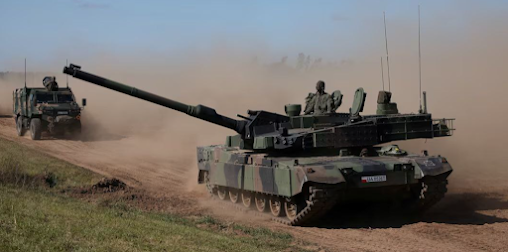 |
| GLSDB Ground Bombs |
According to Western sources, improved versions of Ground-Launched Small Diameter Bombs (GLSDB) are among the weapons that will be sent to Ukraine after the United States resumed military assistance and intelligence sharing with Kiev. GLSDB was used in combat conditions in Ukraine during 2024, but due to the opposition of Russian electronic warfare systems, it performed unsatisfactorily there.
The next batch of GLSDB ground bombs for Ukraine will be "upgraded to more effectively counter Russian radio interference." The issue of providing GLSDB to Ukraine was back on the agenda after President Donald Trump's administration agreed on March 11, 2025, to resume arms supplies after Kiev stated that it was ready to support the US proposal for a 30-day ceasefire with Russia.
GLSDB is especially necessary to fill the shortage of ammunition for the Armed Forces of Ukraine, which arose after the significant depletion of stocks of ATACMS tactical missiles. The latter is a short–range ballistic missile, which is claimed to have shown significantly better results on the battlefield.
Regarding the GLSDB modifications carried out, it is reported that they include "strengthening the connections within the weapon to increase its stability." Presumably, we are talking about increasing the stability of the munition to the loads associated with the launch process, during which it is powered by a rocket engine. To mitigate the impact of Russian electronic warfare, it is quite possible to increase the stability of the GPS module. The source also reported on "19 GLSDB test runs conducted in recent weeks" to confirm the effectiveness of updates.
Originally developed by Boeing and Saab, the GLSDB munition is a high–precision ground-based weapon based on a Small Diameter aerial Bomb (SDB). Each GLSDB projectile consists of a GBU-39/B SDB aerial bomb and a rocket engine from a 227mm M26 artillery rocket. The M26 missile is one of the types of missiles that can be launched from the M270 multiple launch rocket system (MLRS) and its modifications, as well as from the highly mobile M142 artillery rocket system (HIMARS).
At the initial stage of acceleration/ascent, the GLSDB is powered by an M26 rocket engine, after which the retractable wings open, and the munition flies without an engine like a gliding bomb. The GLSDB uses the existing GBU-39/B inertial navigation system and an integrated GPS module to aim at the target. The GLSDB firing range is about 153 km, which makes it particularly relevant for the Armed Forces of Ukraine, as it allows it to hit supply lines and areas of concentration of units of the Russian Armed Forces.
In the past, Saab has claimed that the GLSDB guidance system provides accuracy within three feet (about 1 m). Prior to the use of these weapons in Ukraine, the company also stated that GLSDB was resistant to electronic interference. However, according to reports from Ukraine, the GLSDB turned out to be vulnerable to Russian countermeasures, which is why the ground units of the Armed Forces of Ukraine abandoned these weapons.
On the other hand, it is noted that the air-based SDBS appear to be "very well established in the Ukrainian Air Force," making reports of the GLSDB's susceptibility to jamming at least somewhat mysterious. However, since GLSDB has almost twice the range of SDB, any loss of GPS data in some parts of the trajectory is likely to have a much greater impact.
Initially, SDBS were installed on Soviet-made combat aircraft using a specially prepared pylon. Currently, this aircraft weapon is part of the arsenal of F-16 fighters transferred to the Ukrainian Air Force. Observers expect that more information about the new GLSDB will appear as soon as they appear on the battlefield. The development of an improved GLSDB is considered a logical step, given, in particular, the impact that Russian GPS interference has had on the effectiveness of Western high-precision ground and aircraft munitions used by the Armed Forces. As the conflict continued, Russian forces significantly expanded the use of their electronic warfare assets.
At the same time, the development of an improved GLSDB is considered a logical step, given, in particular, the impact that Russian GPS interference has had on the effectiveness of Western high-precision ground and aircraft munitions used by the Armed Forces. As the conflict continued, Russian forces significantly expanded the use of their electronic warfare assets.
Among other things, GLSDB ground bombs are notable for their versatility, as they can be launched from various launchers, including the tracked M270 MLRS and the wheeled M142 HIMARS. Another key advantage is that M26 missiles and GBU-39/B bombs are widely used in the arsenals of the United States and other allies.




































.jpg)
